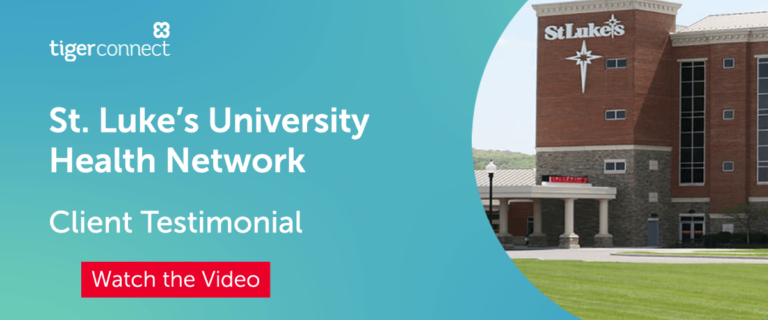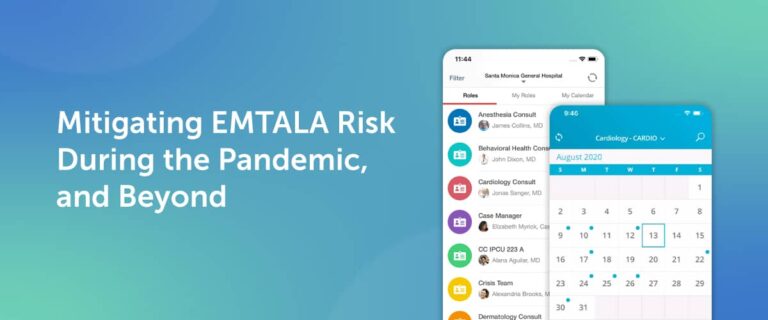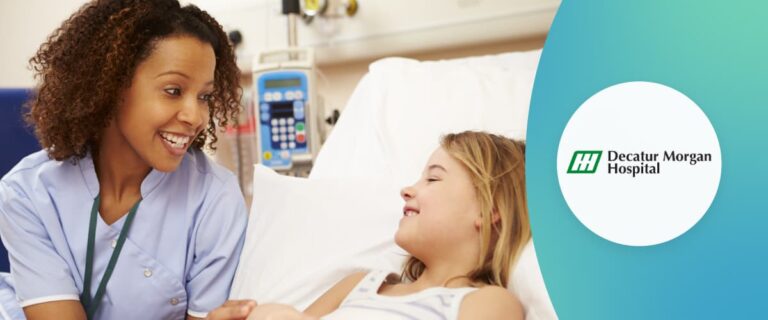Why Hospitals Should Standardize On Middleware
Agility and efficiency are imperatives for every healthcare organization—and recent years have increased pressures to do more, more quickly.

Agility and efficiency are imperatives for every healthcare organization—and recent years have increased pressures to do more, more quickly.

Strong clinical integrations promote better communication among healthcare providers so patients can receive optimal care. Healthcare workers continue to struggle with burn-out from COVID-19, which makes care team coordination imperative.

After experiencing rapid growth over several years, St. Luke’s University Health Network saw a need for improving care team coordination within its organization. Through integration with the TigerConnect Clinical Collaboration platform, the health network leveraged role-based communication to support more efficient clinical operations and workflows.

Nearly half of U.S. hospitals will receive lower payments in 2021 for all Medicare patients because of their readmission rates – an added financial burden as hospitals continue to feel the impact of the pandemic. But as Jefferson Health (formerly Kennedy Health) discovered, the solution may already be within arm’s reach – in their patient data. By leveraging the tools of an integrated, clinical communication platform, Jefferson Health drastically reduced emergency department (ED) overutilization, hospital readmissions, and wasted care.

A quality clinical workflow requires a clinical communication and collaboration platform to get the correct information to the right person at the right time. CC&C platforms streamline workflows, creating the foundation of clinical communication and collaboration between caregivers, allied health, and administrative users.

In the latest episode of the PopHealth podcast, Dr. Will O’Connor, CMIO at TigerConnect, discusses why this is the case and how modern communication technology is imperative to address the challenges that are plaguing healthcare. He talks about the benefits of adopting a stand-alone, easy-to-use, secure communication solution and how it can truly transform patient care while reducing costs.

On-call scheduling can be complex for both hospitals and physician specialties. Although certain aspects of EMTALA were relaxed during COVID to manage the surge of patients, there were still incidents of enforcement actions against providers throughout 2020. As we emerge from the pandemic, hospitals will need to refine their approach to managing their on-call scheduling.

Collaborative care refers to providers being able to discuss a patient’s care, treatment, and outcome. For instance, sharing test results among physicians, nurses, and other providers is critical to successful collaborative care. Of course, this sharing of information must be done securely and consistently.

Clinical interruptions, incessant unfiltered patient alarms and alerts, and extensive documentation inhibit nurses from providing the best patient care and can cause burnout. Unfortunately, these issues are the norm at most hospitals and healthcare systems. Decatur Morgan was no different, but they decided to do something about it.

Effective physician scheduling can be difficult and time-consuming. A surge in patients along with limited staff makes adequate and timely on-call scheduling even more challenging. At the same time, it’s important to evenly distribute hours — one physician can’t be over-scheduled while another is greatly under-scheduled.
End of content
End of content

Since 2010 TigerConnect has been transforming healthcare communications by enabling our customers to automate clinical workflows, speed decisions, and improve patient outcomes. Today our cloud-native Clinical Communication and Collaboration (CC&C) solutions are used by over 7,000 healthcare organizations and 700,000 care team members.